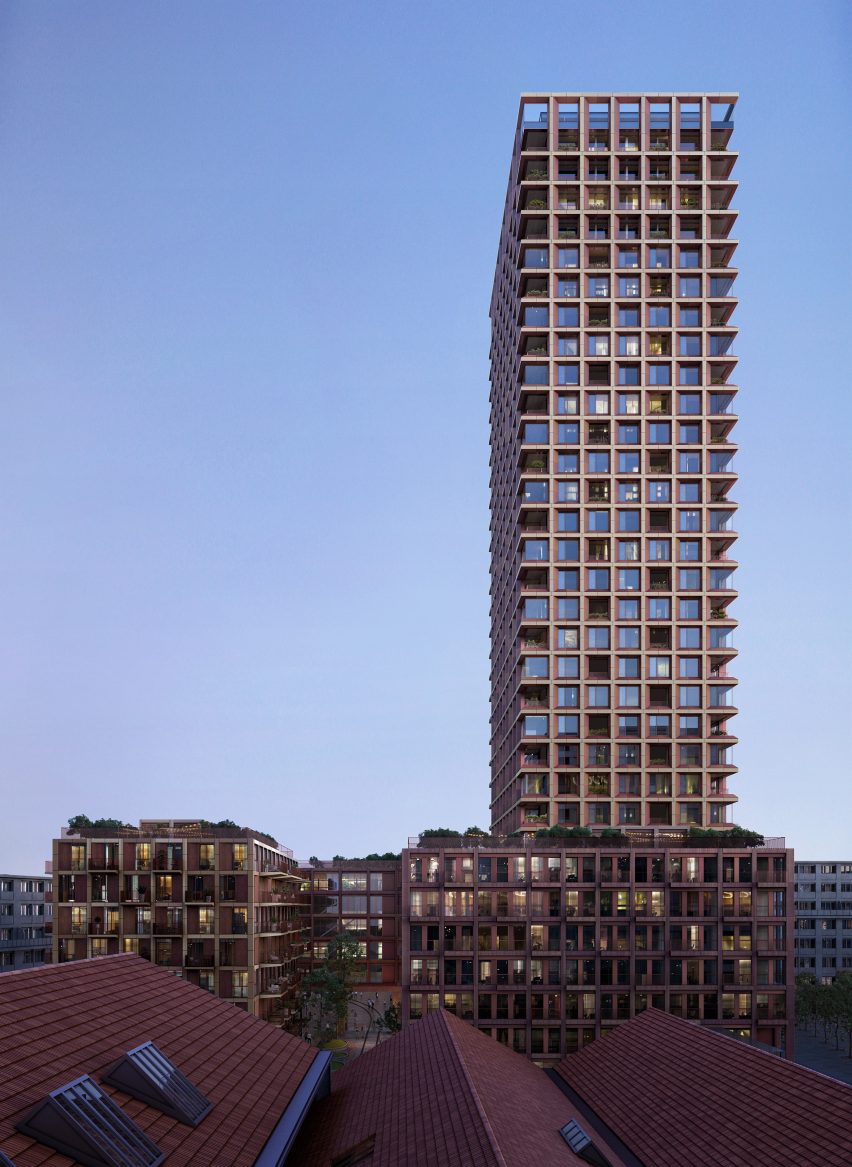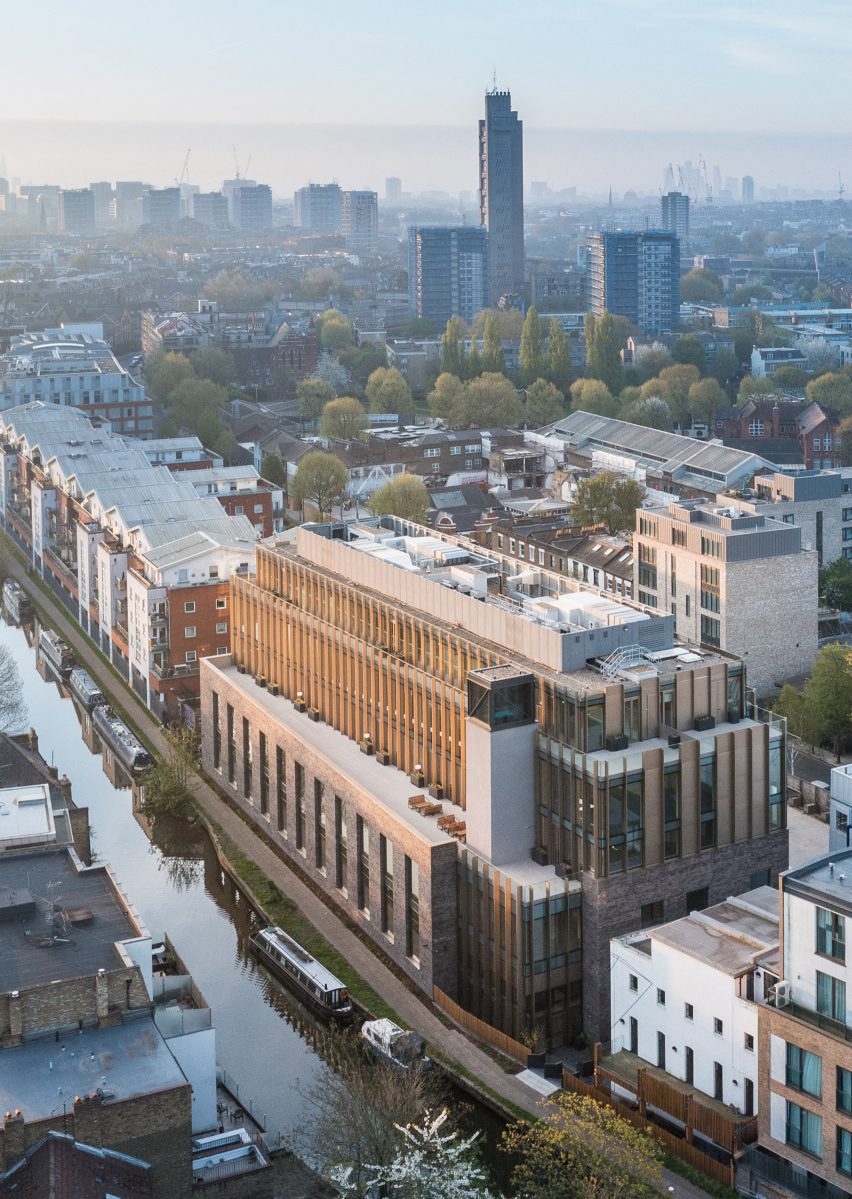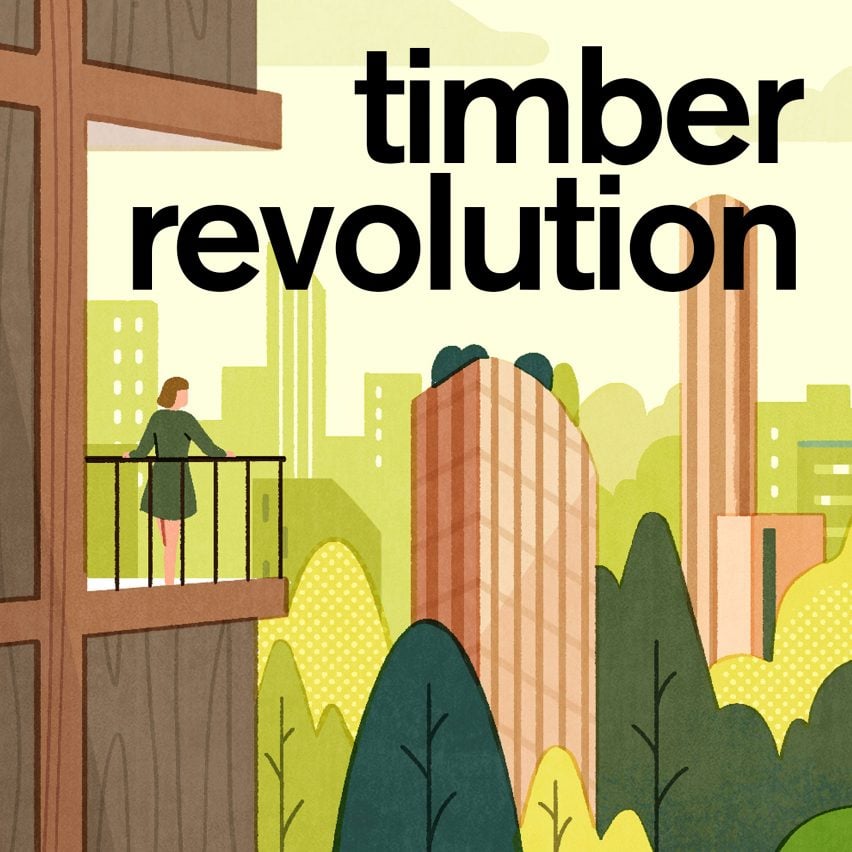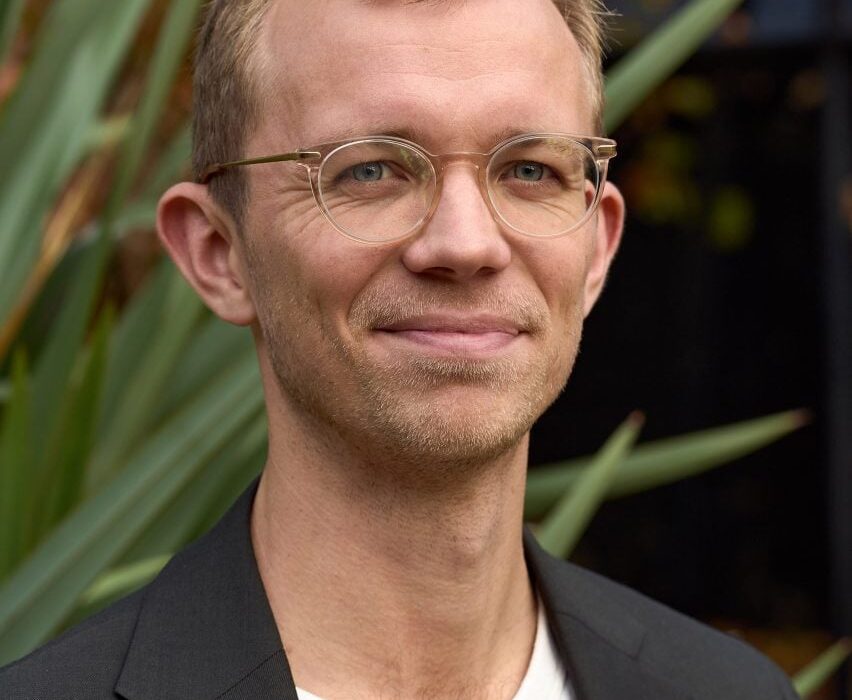“Forests could be at the heart of our society again” says Joe Giddings
We should be aiming for the future depicted in the Timber Revolution logo with a combination of mid- and high-rise mass-timber buildings interspersed with trees, argues ACAN co-founder Joe Giddings in this interview.
“My vision is in some ways aligned to that illustration,” Giddings said of the artwork produced for the series by Yo Hosoyamada (top).
“I really think we should be building our cities densely and avoiding urban sprawl, and if we follow that to its logical conclusion you need buildings at scale.”

Giddings is a co-founder of the Architects Climate Action Network (ACAN) pressure group and UK networks lead at Built By Nature, an organisation dedicated to accelerating timber construction across Europe.
“So many architects really want to use mass timber but never get very far because it’s tricky,” he told Dezeen.
“That is sort of our mission.”
“We really need to be not building as much as we can”
Because of their structural properties, Giddings believes that mass-timber products like cross-laminated timber, glued laminated timber and laminated veneer lumber are best-placed to decarbonise the built environment, and not timber frame as some experts suggest.
Timber frame uses less wood than mass timber but is only suitable for use at up to three storeys he stated. Meanwhile, more resource-intensive engineered-wood products are strong enough to support much taller structures so can help increase urban density.
“It’s really only that family of products that are suitable for the buildings that we should be building,” said Giddings. “I really think we need to be looking at laminated veneer lumber
Giddings also argues that mass timber goes hand-in-hand with reducing demolition of existing buildings as a means of limiting the vast greenhouse gas emissions associated with construction.
“When you imagine a future where we aren’t demolishing anything, timber comes into its own because it’s lightweight and you can add storeys to existing buildings,” he said.
“We really need to be not building as much as we can, and if we are building we need to make sure it’s out of biobased materials. That is the only way the built environment is going to help combat the climate crisis.”
One major current barrier to greater uptake of mass timber in architecture is the limited supply chain, with engineered wood still only accounting for a small proportion of the structural timber products produced worldwide.
However, Giddings contends that increasing demand for mass timber has the potential to mark a fundamental shift in our landscapes, back to one centred around trees.
“If you build up the supply chain enough and demonstrate demand it creates a commercial incentive to plant forests,” he added. “Forests could be at the heart of our society again.”

Another hot topic related to mass timber is the ongoing race to build taller and taller buildings out of wood, with the five tallest timber buildings in the world all completed in the past four years and a 100-metre-tall wooden skyscraper set to be built in Switzerland.
Some experts have been critical of this trend, arguing it does not make best use of the material. But despite his view that mid-rise buildings should be the focus, Giddings sees some value in timber skyscrapers.
“It’s fantastic to see really tall buildings being built from timber,” he said. “It advertises the idea that it’s possible.”
“Of course we really need to be building mid-rise office and apartment buildings but the tall wooden buildings tell people that it is possible, and the reaction is ‘wow, I didn’t know we could do that with timber’.”
“We should always come back to embodied carbon”
Nevertheless, he is firm that simply using timber as part of a building’s structural makeup is not enough, and that the focus should always be on cutting embodied carbon.
“We should always come back to this embodied carbon issue and look at each case on its merit,” he said.
“We shouldn’t be promoting buildings that are quite bad in terms of embodied carbon just because they have a bit of timber in them.”
He points to Google’s gigantic new London headquarters, designed by BIG and Heatherwick Studio and currently under construction. The 330-metre-long building will be partly made out of timber but still use large quantities of concrete and steel.
“Yes they have managed to use timber, but a lot of it is just standard construction,” said Giddings. “I don’t know if we should be celebrating unless they achieve a low embodied-carbon figure.”
Instead, he cites Studio RHE’s The Gramophone Works, also in London, as “a model for how we should be building”.
Completed last year, this project saw 93 per cent of the existing 1930s concrete building kept and extended upwards and outwards with a timber and glass structure to form a new office space.
“We should be celebrating projects that use timber to infill and extend,” said Giddings.

For mass timber to become more widely used, Giddings believes that governments need to champion research into its use and the major technical challenges – moisture ingress and fire safety – which are currently the basis of insurance and regulatory hurdles.
In addition, he emphasises the importance of more architects learning how to use timber appropriately.
Fire in particular, he says, is a “nuanced and complex issue” that should be subject to a frank discussion.
“At the moment we can’t ask any old architect to design a timber building because the knowledge is not there,” he said. “A lot of the know-how exists in a small number of forums.”
“We are faced with a really complex challenge: we need to switch really quickly to mass timber but we also need a rapid uptake in knowledge to enable this transition, which isn’t happening fast enough at the moment.”

Timber Revolution
This article is part of Dezeen’s Timber Revolution series, which explores the potential of mass timber and asks whether going back to wood as our primary construction material can lead the world to a more sustainable future.

